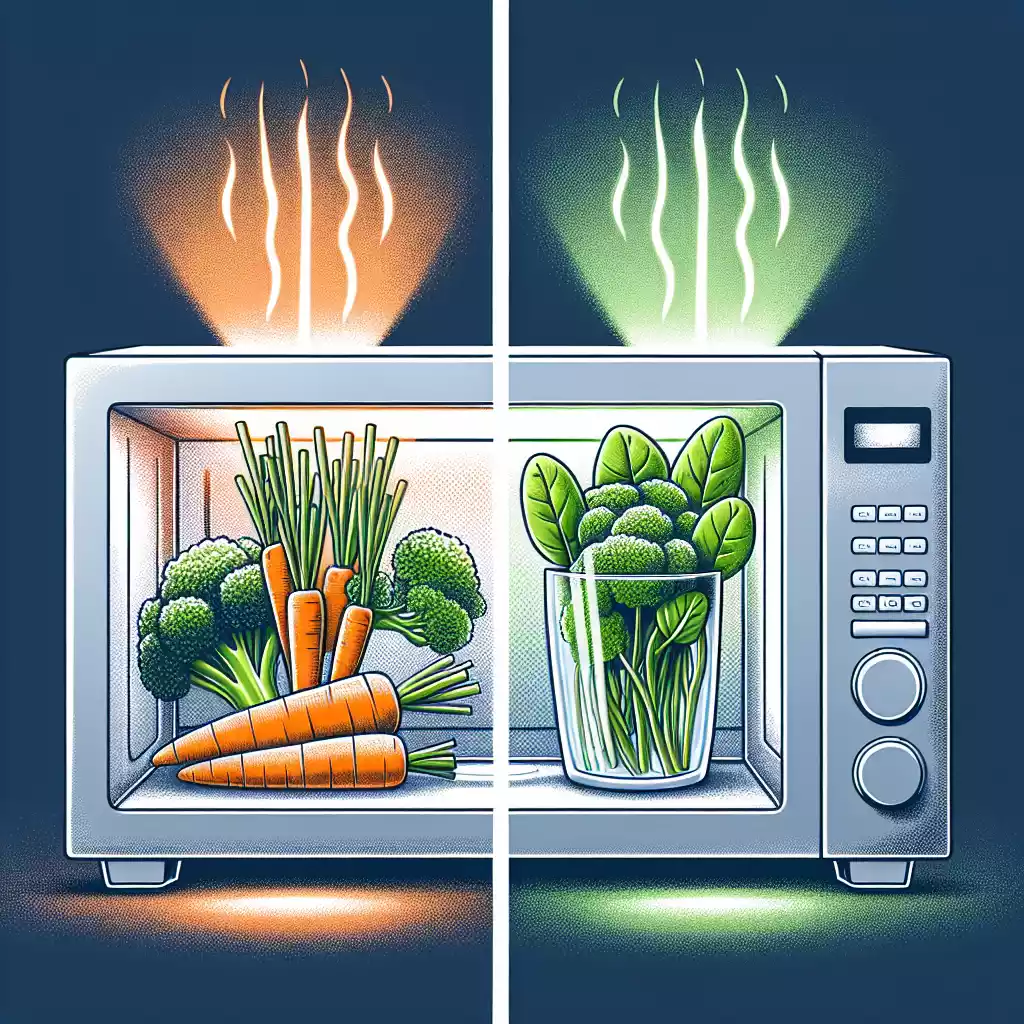Understanding Microwaves
History and Evolution of Microwave Technology
Microwave ovens have become a staple in modern kitchens, but their journey began in the 1940s. Percy Spencer, an engineer, discovered microwave cooking accidentally while working on radar technology during World War II. The first commercial microwave, the Radarange, hit the market in 1947, but it was bulky and expensive. Over the decades, advancements in technology made microwaves more affordable and compact, leading to widespread household adoption.
How Microwaves Work
Microwaves cook food using electromagnetic waves. These waves excite water molecules in the food, generating heat through friction. This process cooks food from the inside out, which is different from traditional ovens that cook from the outside in. A common misconception is that microwaves use harmful radiation, but in reality, they operate at a frequency that is non-ionizing and safe for cooking.
Nutrient Composition in Food
Types of Nutrients
Food contains a variety of nutrients essential for health. Macronutrients include carbohydrates, proteins, and fats, which provide energy and support bodily functions. Micronutrients, such as vitamins and minerals, are needed in smaller amounts but are crucial for various biochemical processes.
Nutrient Sensitivity to Heat
Certain nutrients are sensitive to heat and can degrade during cooking. Water-soluble vitamins like Vitamin C and B vitamins are particularly vulnerable. Fat-soluble vitamins (A, D, E, K) and minerals tend to be more stable but can still be affected by prolonged exposure to high temperatures.
Microwaving and Nutrient Retention

Effects of Microwaving on Vitamins
Microwaving can impact the vitamin content of food, but it often retains more nutrients compared to other methods. Water-soluble vitamins, such as Vitamin C and B vitamins, can degrade during microwaving, but the quick cooking time helps preserve a significant portion. Fat-soluble vitamins like A, D, E, and K are generally more stable and less affected by microwaving.
Effects of Microwaving on Minerals
Minerals are generally stable and less affected by microwaving. Elements like calcium, iron, and potassium retain their nutritional value well. Compared to boiling, where minerals can leach into the cooking water, microwaving with minimal water helps keep these essential nutrients in the food.
Comparing Cooking Methods
Boiling vs. Microwaving
Boiling food often leads to significant nutrient loss, especially for water-soluble vitamins. The nutrients can leach into the water, which is typically discarded. Microwaving, on the other hand, uses less water and shorter cooking times, which helps in better nutrient retention.
Steaming vs. Microwaving
Steaming is another gentle cooking method that preserves nutrients well. When comparing steaming to microwaving, both methods are effective at retaining nutrients. However, microwaving is faster and can be more convenient for busy lifestyles.
Common Myths and Facts
Myth: Microwaves Cause Cancer
One of the most persistent myths is that microwaves cause cancer. This fear stems from confusion about radiation. Microwaves use non-ionizing radiation, which does not have enough energy to damage DNA or cause cancer. Studies have consistently shown that microwaving food is safe.
Myth: Microwaves Destroy All Nutrients
Another common belief is that microwaving destroys all nutrients in food. While some nutrient loss occurs, microwaving often preserves more nutrients compared to boiling or frying. The quick cooking time and minimal water usage are key factors in nutrient retention.
Practical Tips for Microwaving
Best Practices for Nutrient Retention
To maximize nutrient retention when microwaving:
– Use minimal water.
– Avoid overcooking.
– Cut food into uniform pieces for even cooking.
– Use microwave-safe containers.
Choosing Microwave-Safe Containers
Using the right containers is crucial for safe microwaving. Avoid plastic containers that are not labeled microwave-safe, as they can leach harmful chemicals into the food. Glass and ceramic containers are excellent choices for microwaving.
Scientific Studies and Findings
Recent Research on Microwaving and Nutrients
Recent studies indicate that microwaving is one of the best methods for nutrient retention. For example, a study published in the Journal of Food Science found that microwaving preserved more antioxidants in vegetables compared to boiling. These findings support the idea that microwaving is a nutritionally sound cooking method.
Expert Opinions
Nutritionists and food scientists generally agree that microwaving is safe and effective for preserving nutrients. Experts recommend using microwaves for cooking vegetables, as the quick cooking time helps maintain their nutritional value.
Variations in Microwave Cooking
Microwaving Different Types of Food
Different food groups respond differently to microwaving:
• Vegetables: Retain most of their nutrients when microwaved with minimal water.
• Meats: Ensure even cooking by cutting into smaller pieces.
• Grains: Use microwave-safe bowls and sufficient water to cook evenly.
Microwaving Frozen vs. Fresh Food
Microwaving frozen food can be just as nutritious as fresh food. The freezing process preserves nutrients, and microwaving quickly brings them to a safe temperature. For best results, follow package instructions and use microwave-safe containers.
Frequently Asked Questions (FAQs)
FAQ 1: Does microwaving food make it less healthy?
Microwaving can actually preserve more nutrients compared to other cooking methods, making it a healthy option for preparing food.
FAQ 2: Are there any foods that should not be microwaved?
Yes, avoid microwaving eggs in their shell and foods with low water content as they can explode or dry out.
FAQ 3: How can I ensure my food retains the most nutrients when microwaving?
Use minimal water, avoid overcooking, and use microwave-safe containers to retain the most nutrients.
FAQ 4: Do microwaves emit harmful radiation?
No, microwaves use non-ionizing radiation, which is safe and does not cause harm or cancer.
FAQ 5: Is microwaving food in plastic containers safe?
Only use containers labeled microwave-safe to avoid harmful chemicals leaching into your food.
Conclusion
Microwaving food is a safe and efficient method that can help preserve nutrients better than many other cooking techniques. By following best practices, such as using minimal water and microwave-safe containers, you can ensure your meals are both nutritious and delicious. So, embrace your microwave as a valuable tool in your kitchen arsenal.

